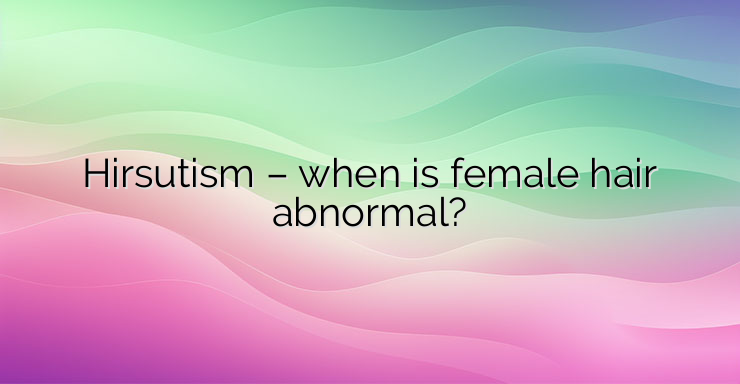Hirsutism is a common clinical condition seen in female patients of all age groups. It affects about 5-10% of women and is a common complaint. The cause is mainly hyperandrogenism, which can be ovarian or adrenal. It may be part of a rare drug-induced metabolic syndrome or simply idiopathic. Hirsutism has a huge psychosocial impact, especially in young women. Hirsutism is defined as the presence of terminal coarse hairs in women in a distribution similar to men. It affects about 5-10% of women. It is imperative not only to find out the cause of hirsutism, but it is also important to know how to recommend the right treatment based on the underlying causative factor. The most important determining factor in making the diagnosis is the change in the shape and growth rate of the hair. A technique for evaluating hirsutism with video equipment and computer software has been developed. A digital image of hair development was recorded, demonstrating a significant difference in hair shape and growth rate between women with hirsutism and healthy women. Classically, hirsutism is considered a marker of elevated androgen levels in women from increased production of androgens (ie, testosterone) either by the adrenal glands or due to ovarian disease. Causes of ovarian hyperandrogenism can be polycystic ovary syndrome and ovarian tumors. Adrenal causes include Cushing’s syndrome, androgen-producing tumors, and congenital adrenal hyperplasia, most commonly due to 21-hydroxylase deficiency. Less common causes include hyperandrogen-insulin-resistant acanthosis nigricans syndrome. Hyperprolactinemia by increasing the production of adrenal dihydroepiandrosterone sulfate can cause hirsutism. About 20% of patients have so-called idiopathic hirsutism with normal androgen levels and normal ovarian function. It is believed that the cause of increased hair growth in these women is related to disturbances in peripheral androgenic activity. The onset of idiopathic hirsutism occurs shortly after puberty with slow progression. Polycystic ovary syndrome and idiopathic hirsutism account for 90% of hirsutism in women. The disease can also occur in some premenopausal women and continue for several years after menopause. This is due to a decrease in ovarian estrogen secretion with continuous production of androgens. Hirsutism is due to either increased production or increased sensitivity of hair follicles to circulating androgen (testosterone). The majority of testosterone is secreted either by the ovaries or the adrenal glands (80%). A small amount of circulating testosterone is derived from the conversion of androgen precursors, mainly androstenedione (derived from the ovaries and adrenal glands) and dihydroepiandrosterone (derived from the adrenal glands) in the liver, skin and adipose tissue.Women suffering from hirsutism usually have increased terminal hair growth on the sides of the face, upper lip, chin, upper back, shoulders, sternum and upper abdomen. Most women resort to hair removal through various epilation methods. Although simple and inexpensive, these methods are temporary and have their own side effects such as physical discomfort, scarring, folliculitis, irritant dermatitis or discoloration. Electrolysis is also used for hair removal. With multiple treatments, the efficacy ranges from 15 to 50% permanent hair loss. Oral contraceptives are the first-line treatment for hirsutism, especially in women who desire contraception. Estrogen/progesterone combinations work by reducing gonadotropin secretion and thereby reducing ovarian androgen production. References: 1. Rosenfield RL. Clinical practice. Hirsutism. N Engl J Med. 2005;353:2578–88. [PubMed] [Google Scholar] 2. Azziz R, Carmina E, Sawaya ME. Idiopathic hirsutism. Endocr Rev. 2000;21:347–62. [PubMed] [Google Scholar] 3. Lin-Su K, Nimkarn S, New MI. Congenital adrenal hyperplasia in adolescents: Diagnosis and management. Ann NY Acad Sci. 2008;1135:95–8. [PubMed] [Google Scholar]


Leave a Reply